Granny was a farmer. She and Papa had a small farm and grew most of their food. They purchased flour, coffee, and sugar, but most other foods came from the farm. She also had a medicinal garden and grew her medicines there. I don’t remember her ever going to the doctor, but I’m sure she did for major illnesses.
Her medicinal garden included these five plants that she believed in. She also used garlic, onion, and other herbs that she grew in her vegetable garden. These five were grown for medicinal use only and she taught me to use them as well. They were the basis of our everyday medicine.
St. John’s Wort
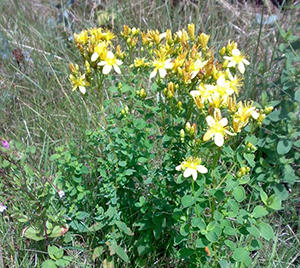
Granny grew St. John’s Wort for menstrual cramping and the symptoms of menopause. She would make a tea from the leaves and drink it three times a day for symptoms. As she grew older she began using the tea and the topical oil for nerve pain of neuralgia, muscle pains, back pains, and body aches.
She also whispered to me that it was good for hemorrhoids, reducing the inflammation and pain.
As she grew older, my grandmother began using St. John’s Wort to treat arthritis, rheumatism and gout. She drank the tea as before, two to three times a day, every day. Over time, it greatly reduced her pain.
St. John’s Wort has powerful anti-inflammatory properties that treat chest congestion, speeds healing of infections, including colds and the flu.
The herb is known to have additional uses including: removing fluids and detoxing the body, treating childhood bedwetting, and lowering blood pressure problems. It is also reported to help in alleviating the symptoms of mild opiate withdrawal.
Aloe Vera
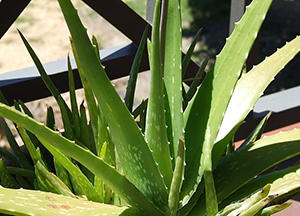 My grandmother grew a stand of aloe vera in a corner of her Georgia farm. Every time I visited, she would make sure I had a pot to take home. The stuff grew well in South Carolina where I grew up and at my current Florida home. Over the years, I have used the gelatinous sap repeatedly for sunburns, burns, skin abrasions and wounds, and other skin problems.
My grandmother grew a stand of aloe vera in a corner of her Georgia farm. Every time I visited, she would make sure I had a pot to take home. The stuff grew well in South Carolina where I grew up and at my current Florida home. Over the years, I have used the gelatinous sap repeatedly for sunburns, burns, skin abrasions and wounds, and other skin problems.
Aloe vera is also edible and can be used internally to soothe the intestinal tract. Take it with meals to relieve reflux and heartburn, or use the juice to relieve cramping, flatulence, and abdominal pain. It is also a natural laxative, so you should start with small doses.
The plant is reported to lower blood sugar in diabetics taking just 2 tablespoons of the juice or pulp. I have not tried it for this purpose, but I certainly would try it if I were diabetic.
Related: How To Make Tea Tree Oil To Treat Infections
Peppermint
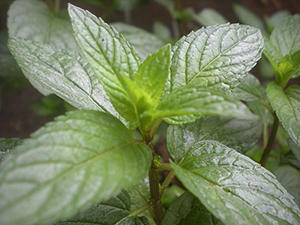 Granny loved peppermint. I think this was her favorite herb. She would often just pick a sprig and eat it. The trick to growing peppermint is to plant it in moist, rich soil and keep it moist but not wet.
Granny loved peppermint. I think this was her favorite herb. She would often just pick a sprig and eat it. The trick to growing peppermint is to plant it in moist, rich soil and keep it moist but not wet.
Granny used peppermint mostly for indigestion, stomach aches, flatulence, intestinal, and liver problems. She would sip on peppermint tea throughout the day for stomach problems. It stimulates the release of bile in the body. It also contains anti-inflammatory, anti-bacterial, and anti-viral properties that treat the causes of the illness while soothing the intestinal tract.
Stomach and Menstrual Cramping
Peppermint oil relaxes the muscles of the stomach and uterus to relieve cramping. It is useful for treating diarrhea, spastic colon, IBS, and Crohn’s disease. To relax the bowels and stomach, sip on peppermint tea throughout the day.
Headaches and Migraines
Granny also used peppermint oil, 1 drop diluted in a teaspoon of olive oil and rubbed on the forehead or on the scalp over the painful areas.
Related: Make Your Own Peppermint Oil – The Best Insect Repellent
Yarrow
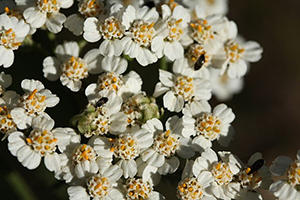 Granny called this plant nosebleed plant. It has many different uses, most notably its ability to stop bleeding quickly. If one of us got a cut or wound, granny would clean out the wound and sprinkle it with dried yarrow. She would dress the wound two or three times a day until it healed.
Granny called this plant nosebleed plant. It has many different uses, most notably its ability to stop bleeding quickly. If one of us got a cut or wound, granny would clean out the wound and sprinkle it with dried yarrow. She would dress the wound two or three times a day until it healed.
Yarrow’s healing effects extended below the skin as well. She would use it on bruises, sprains, hemorrhoids, and itchy skin.
For fevers, colds, and the flu, granny would give us a piece of raw yarrow root to chew on. It made us sweat, reducing fevers. It is best used early in the illness to open pores and clean toxins from the body.
Related: 16 Wild Edibles You Didn’t Know You Could Forage For
Evening Primrose
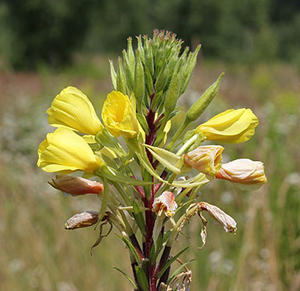 In granny’s garden, evening primrose was as much an ornamental as a medicinal plant. She grew it along the fence line where it thrived. The flowers open for only one or two nights, closing in the morning. The flowers were beautiful, although short lived.
In granny’s garden, evening primrose was as much an ornamental as a medicinal plant. She grew it along the fence line where it thrived. The flowers open for only one or two nights, closing in the morning. The flowers were beautiful, although short lived.
We were a family of mostly women, so it makes sense that she would grow evening primrose. The plant is known for balancing the female hormones, treating symptoms of PMS, including headaches, bloating, acne and moodiness. It is also said to be helpful in treating Polycystic Ovarian Syndrome (PCOS.) Women with PCOS who take evening primrose are more likely to conceive and carry a child to full term.
Granny would also use a poultice made from evening primrose root to treat skin problems including piles and wounds. It reduces inflammation and helps the skin heal.
My grandfather swore by evening primrose oil for treating his hair loss. He rubbed the oil on his hair every night and felt that it helped his hair grow back in when he started to go bald.
Granny also took evening primrose for the treatment of her arthritis. She felt that it relieved her arthritis pain when taken daily.
These are the remedies that grannie used regularly. We knew that if we got cut, we should bring in an aloe leaf when we came in. These remedies were part of our every day knowledge.
Unfortunately, so many of us have lost that knowledge. The younger generation rolls their eyes at me when I try to tell them how to use these amazing plants. They would rather run to the doctor and take a pill. I like the natural remedies and I encourage you to learn more about them. I believe the natural remedies to be more healthful for the body when taken correctly.
You may also like:
 How to Make the Most Powerful Natural Antibiotic
How to Make the Most Powerful Natural Antibiotic
World’s Smallest Battery Powers House For 2 Days (Video)
Trees That Can Be Tapped For Sap And Syrup

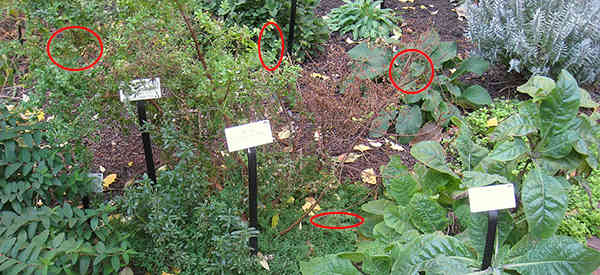













something is not letting me order
Granny should have grown some wild lettuce, its good for relieving pain.
Why is it that every month or so there is someone posting about plants that either some old person, pioneers or settlers used? We know already, it’s one Google search away with more information and the ability to fact check it.
If you are like me, you don’t really know about all the different plants and therefore learn an awful lot from these posts.
Are you serious! There is nothing better , more reliable then first hand knowledge and it certainly needs to be shared.. how about you pop off to Google and search something else to be judgemental about ?
Well said!!
Home remedies are something we all should know about.what if there were no internet..where would we all be..in the 60,s we all wanted to know haw to be able to function in a crisis..today people think there May never be another crisis..we never know:/
It’s nice to know that there is someone who knows all there is to know about medicinal plants and edible wild plants. Perhaps you would be willing to share your vast knowledge with the rest of the readers by writing an article for this list.
Personally, my knowledge of medicinal plants and edible wild plants is pretty sketchy and the more I read, and especially look at pictures of the plants the more I feel—not confident, that is too strong a word, but I feel as if I can safely accurately identify helpful plants. There are too many plants that, while not actually harmful, are inedible due to their harsh taste or worse yet, while not actually killing you make you quit ill. Many plants look quite similar. Just as a for instance, hogweed strongly resembles dandelion. However, I understand that hogweed, while edible, is not nearly so edible as dandelion. When both are in their immature stage, to my eye, they both look identical. It is only when hogweed reaches maturity that its difference from dandelion becomes clearly identifiable. Now a person who is far more familiar with wild plants may disagree that hogweed and dandelion are similar in appearance and may be able to point out all the nuances that differentiate one form the other, but i cannot.
Maybe you should skip it then, Emanon. no one is forcing you to read it.
My Granny knew all the plants and their uses. She never took drugs and died at the age of 98 and had all her natural teeth.
I wish I had paid more attention when she was living with us.
Love your Post
Hey, I know a pot load about plants but Google doesn’t put me in touch with any wonderful Grannies, I love articles like this one. The main reason Granny was healthy was that she gardened! These plants are all in the mainstream of traditional British folk medicine, their effectiveness established over centuries of use. St. John’s Wort has been shown to be an effective anti-depressant among it’s other uses, but if you are taking prescription meds you need to carefully research possible drug interactions, it can and will effect how other drugs act in your system. Google is good for that…
I’ve had these plants in my garden for years, proud to be somebody’s eccentric Grandpa.
How was evening primrose used? Other than the root poultice as mentioned I’ve been unable to find any clear reference to historical preparation of this. Are leaves used for tea, the flowers, seeds? The seeds are tiny and to suggest eating them, well that is a LOT of plants to harvest for a teaspoon a day. Soak them in oil or crushing them for oil still the same problem. Currently I buy oil in capsules but would love to use my own plants. Just can’t see me out there every day harvesting enough from them to be of use for all those ills. If anyone knows how it was traditionally used please post.
The oil in the capsules is extracted using hexane, do not know your feelings on chemical extraction but i try and avoid it myself. From what i understand you just eat the seeds.
** I have never used evening primrose, i in no means wish to lead some one astray. Please do your research before using and do not believe just some hillbilly on the internet.**
Fair comment.
I agree chemical extraction is not ideal but the oil does provide benefits, to women especially. Hence my research to find how the seeds/plant were used originally. I have tried collecting the seed and using them but I wonder if my body can even use them since they are so small and hard and if they don’t just ‘pass through’ unutilised. Plus that’s a lot of harvesting and I don’t know anyone that has time to do it intensively all day for the few months they are available.
Thanks for your input tho.
St. Johns Wort is also good for detox, but it is known to clear certain medications out of the body too quickly, so you need to check the indications for your Rx before using St. Johns Wort.
Stinging nettle is another great one. It’s great for allergies, asthma, stomach pains and so much more.
I , for one, enjoy Mr. Davis’s articles. I have also purchased his books. It is said that all you need to survive has been provided for you. Plants and herbs kept native Americans , and pioneers , alive and well . Ease of procurement and use are what fuels our chemical dependency .
I love articles such as these. We need more of them from those who actually know and use the herbs and plants. All the knowledge we can get about these subjects the better prepared we’ll be for anything. Thank you for all the knowledge shared, I am very grateful for it.
Regarding the article on 10 medicinal plant tp grow in your backyard, I appreciate that good advice. However, I get confused when I begin ordering the seeds. What is the scientic name of the best varieties of all the suggested herbs mentioned in the article? Your assistance with this can help me obtain the seed for the various plants. Thanks so much, James O. B. Keener
Not sure which article you’re referring to but in this article they are as follows:
St John’s Wort – Hypericum perforatum
Aloe vera – Aloe vera or A. barbadensis
Peppermint – Mentha x piperita
Yarrow – Achillea millefolium, wild white flowering form, not the hybrids often sold in garden shops
Evening Primrose – Oenothera biennis
In most cases you want the wild species, not the cultivated hybrids that have been selectively crossed to produce either better/bigger flowers or leaves of various colours, shape or form. Not sure what the laws are in your area specifically but you may be able to collect some wild seed late summer and autumn for spreading in your own garden in spring.